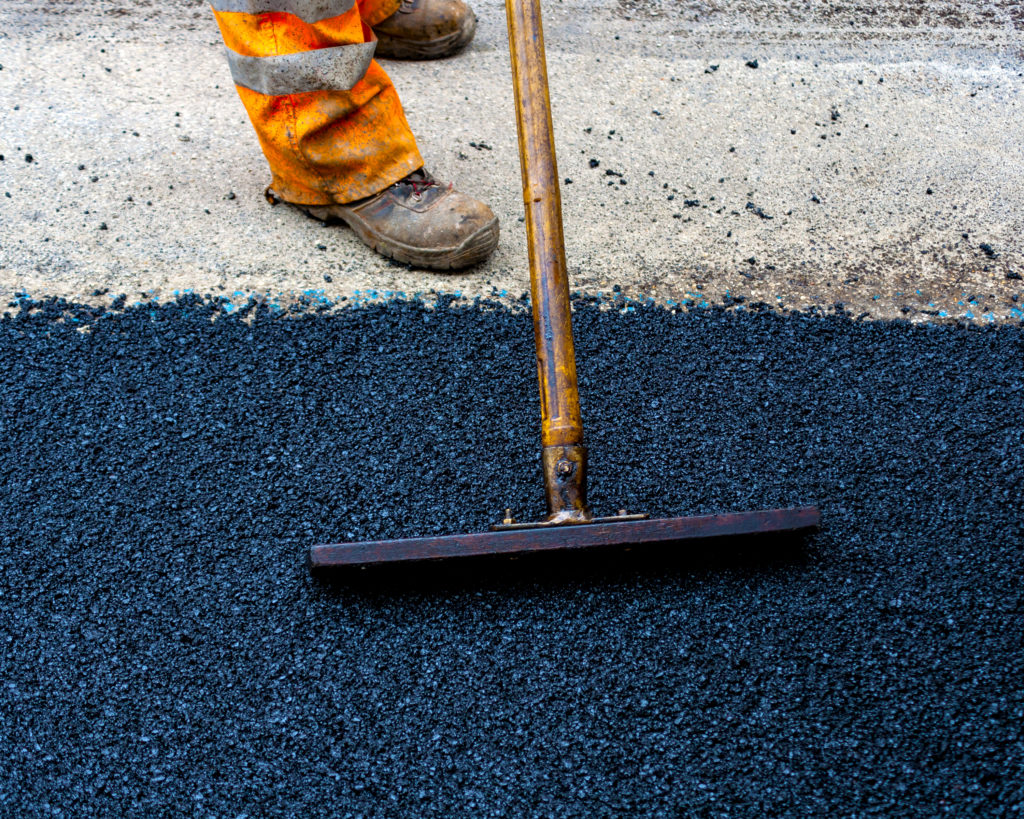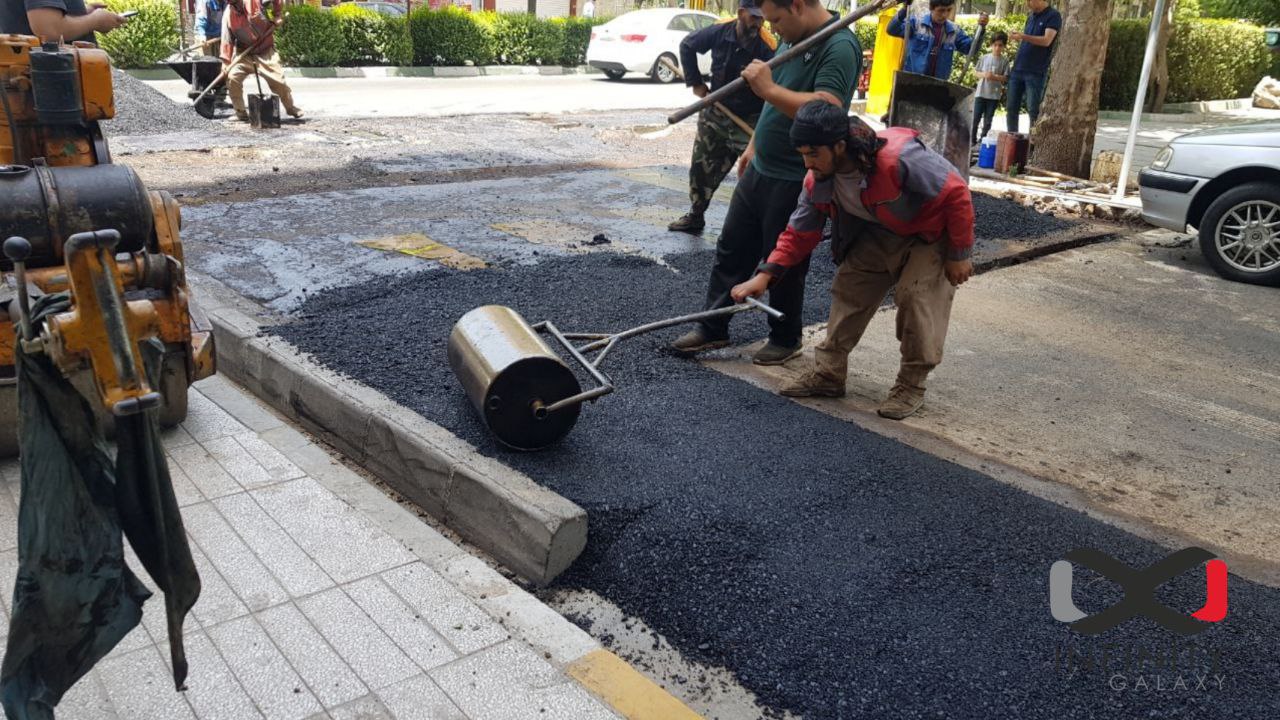Hot Mix Asphalt Paving: Redefining Industrial Home Landscapes
Hot Mix Asphalt Paving: Redefining Industrial Home Landscapes
Blog Article
Unlocking the Tricks of Warm Mix Asphalt Modern Technology
Exploring the midsts of warm mix asphalt innovation uncovers a globe where careful processes and precise solutions assemble to shape our roadways and infrastructure. The blend of binders, fillers, and aggregates isn't just a building task yet a calculated orchestration of toughness and effectiveness.
Relevance of Hot Mix Asphalt
Warm Mix Asphalt plays a crucial duty in modern framework development as a result of its resilience and cost-effectiveness. As one of the most typically made use of paving product for roads, freeways, and car park, Hot Mix Asphalt supplies a variety of advantages that add to its relevance in building tasks. One key benefit is its capacity to endure rush hour loads and extreme weather conditions, supplying a dependable and resilient surface area for transportation networks. Furthermore, Warm Mix Asphalt is cost-effective in both preliminary building and construction and long-term maintenance, making it a recommended option for lots of infrastructure projects.
The longevity of Hot Mix Asphalt stems from its composition, which consists of aggregates, binder, and filler materials that are meticulously chosen and mixed to fulfill particular performance needs. In general, the importance of Warm Mix Asphalt in infrastructure growth can not be downplayed, as it continues to be a foundation of modern building and construction methods.
Components of Asphalt Mixes
The make-up of asphalt mixes consists of very carefully picked aggregates, binder, and filler materials that are vital for attaining specific performance demands. Accumulations are the key component of asphalt mixes, supplying toughness and security. The binder, typically bitumen or asphalt cement, holds the aggregates with each other and gives adaptability and resilience to the mix.
The combination and proportion of these elements play a substantial role in identifying the high quality and performance of the asphalt mix. Designers meticulously design the mix to meet specific requirements, considering elements like website traffic quantity, environment problems, and sidewalk life expectancy. Appropriate choice and balancing of aggregates, binder, and fillers are necessary for developing long lasting, resilient asphalt sidewalks.
Mixing and Production Techniques
:max_bytes(150000):strip_icc()/asphalt-worker-134249388-58cdf96f5f9b581d723f2f33.jpg)
When the accumulations are picked, the binder, frequently asphalt cement, is contributed to bind the products with each other. The binder's high quality and quantity dramatically influence the mix's strength, resistance, and flexibility to ecological variables. In addition, fillers like moisturized lime or Rose city cement may be incorporated to enhance specific characteristics of the asphalt mix, such as its workability or dampness resistance.
Throughout manufacturing, the aggregates and binder are heated, generally between 250-325 ° F(121-163 ° C ), to promote blending and make sure appropriate covering of the aggregates. The blending procedure should be extensive Extra resources to achieve an uniform mixture that advertises the preferred efficiency characteristics of the asphalt. Different methods, such as batch blending or drum blending, are employed to attain constant and top notch asphalt blends for building and construction jobs.
Factors Influencing Asphalt Performance
Variables influencing asphalt efficiency incorporate a variety of variables that influence the resilience, long life, and overall high quality of asphalt sidewalks. One key aspect is the top quality of materials utilized in the asphalt mix.

Layout considerations, such as pavement thickness and drain, are crucial in ensuring the long-lasting performance of the asphalt sidewalk. By meticulously considering these specialists, designers and aspects can enhance asphalt efficiency and improve the click to read more service life of pavements.
Sustainable Practices in Asphalt Technology

Furthermore, the development of warm-mix asphalt (WMA) technologies has gained grip in recent times. WMA enables the production and placement of asphalt blends at reduced temperatures compared to traditional hot-mix asphalt, causing minimized energy consumption and greenhouse gas exhausts. The use of porous asphalt blends can assist reduce stormwater drainage problems by allowing water to penetrate with the pavement and right into the ground, promoting all-natural water filtering and recharge procedures. By implementing these lasting methods, the asphalt sector can contribute to building a much more resistant and ecologically pleasant facilities network.
Final Thought
To conclude, warm mix asphalt modern technology plays an important function in modern-day framework development due to its longevity and cost-effectiveness. By carefully balancing elements, utilizing appropriate blending strategies, and taking into consideration various factors, engineers can create premium asphalt mixes that hold up against rush hour loads and harsh climate condition. Embracing sustainable practices, such as using recycled materials and warm-mix innovations, further enhances the environmental kindness of asphalt technology.
Mixing and manufacturing strategies in warm mix asphalt innovation entail the precise mix and handling of aggregates, binder, and fillers to create a high-performance and sturdy asphalt mix.Variables affecting asphalt performance encompass an array of variables that affect the sturdiness, longevity, and total high quality of asphalt pavements. Sustainable techniques in asphalt innovation encompass numerous efforts aimed at lowering the ecological impact of asphalt manufacturing and paving processes. By incorporating redeemed asphalt pavement (RAP) and recycled asphalt tiles (RAS) into brand-new asphalt mixes, the find more information industry can dramatically minimize the consumption of raw products and energy, while likewise decreasing land fill waste.
WMA allows for the manufacturing and placement of asphalt blends at lower temperature levels compared to standard hot-mix asphalt, resulting in decreased power consumption and greenhouse gas discharges.
Report this page